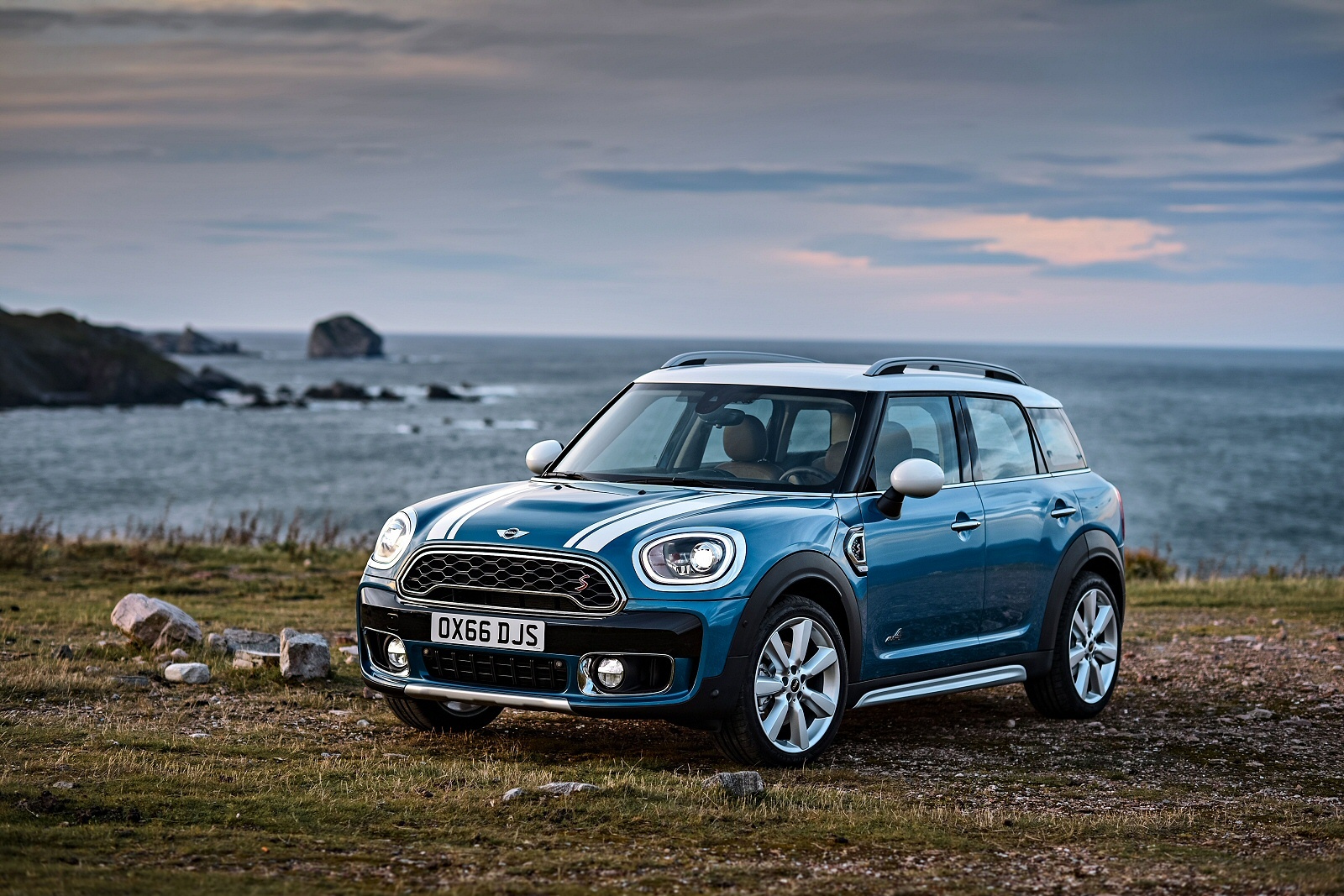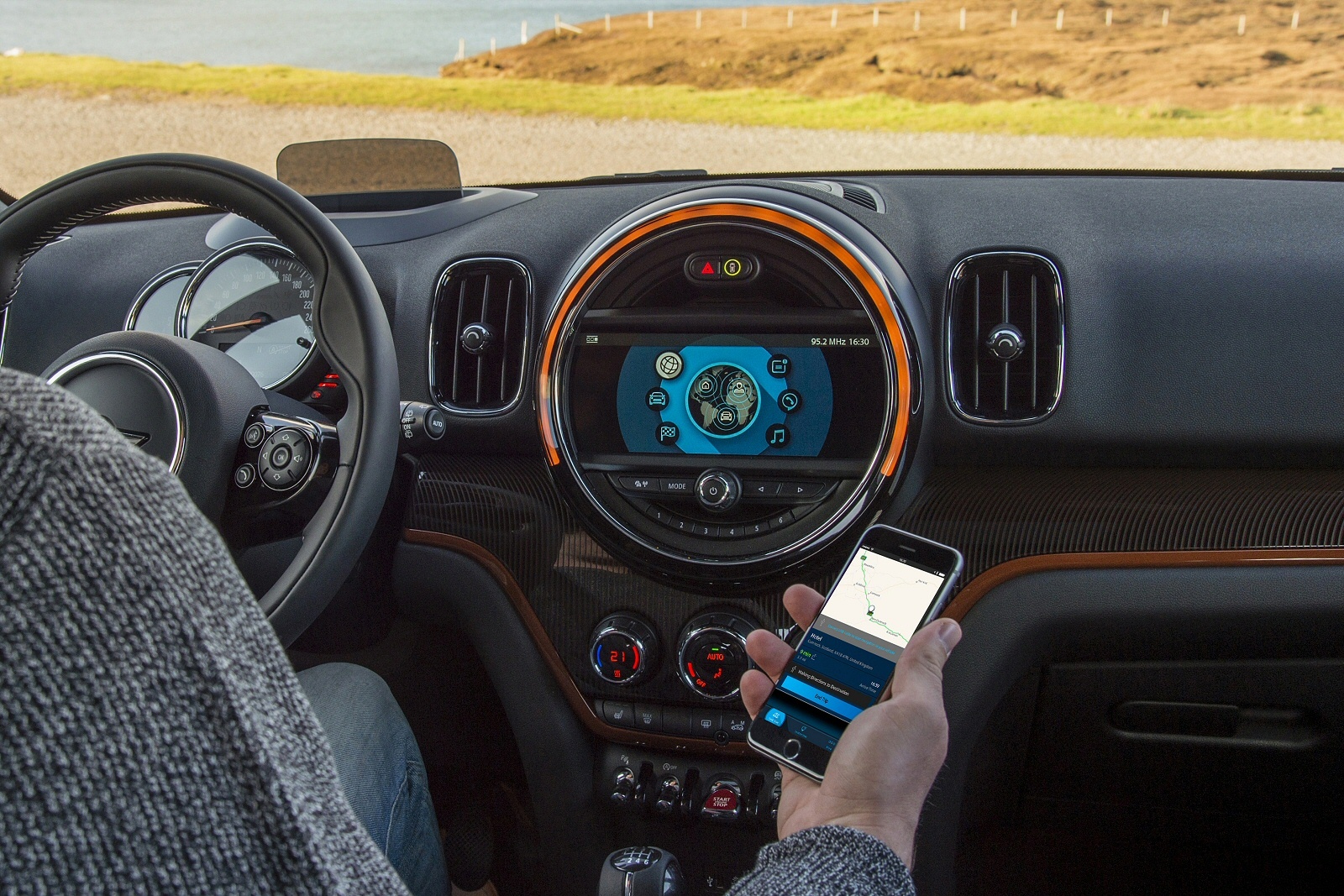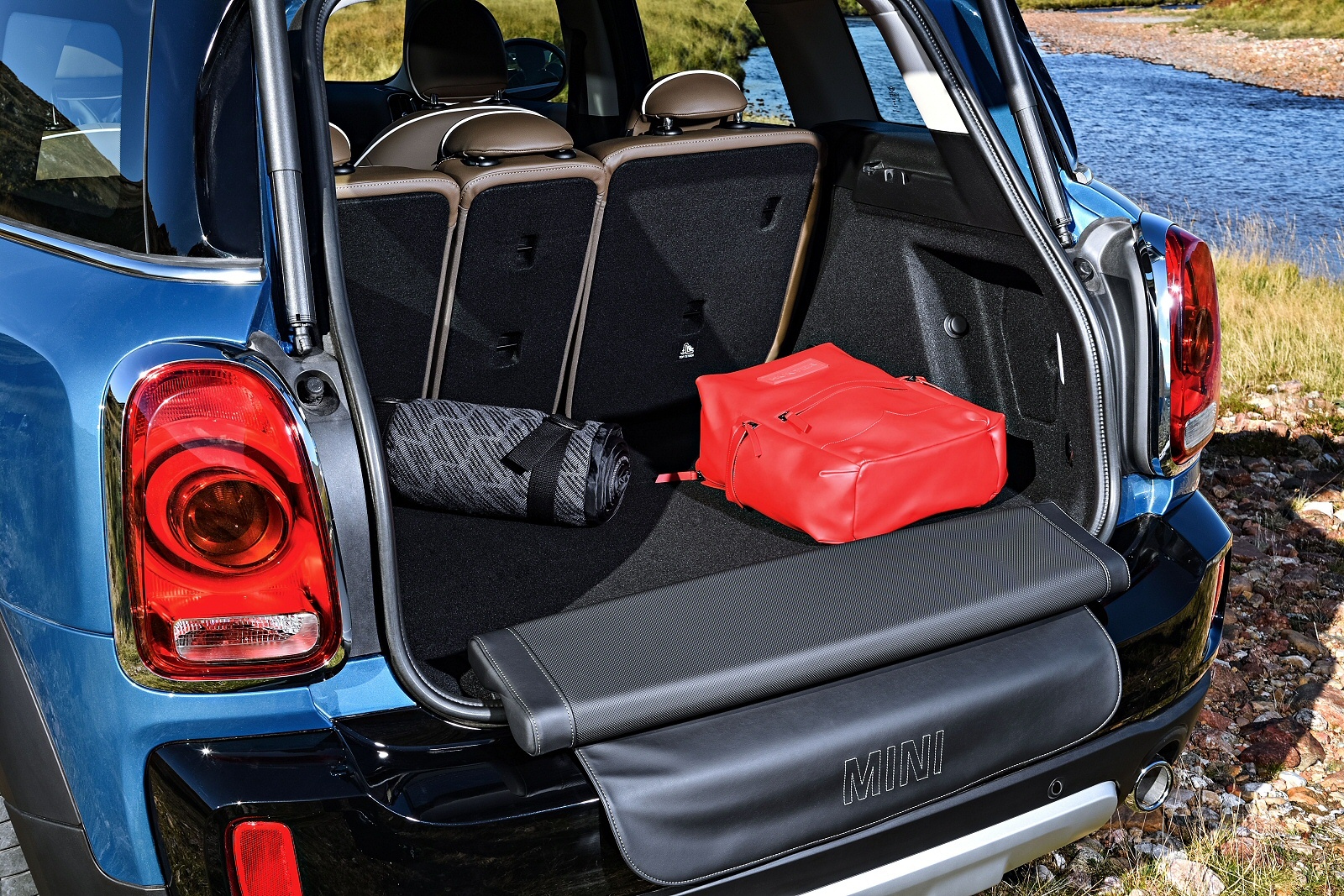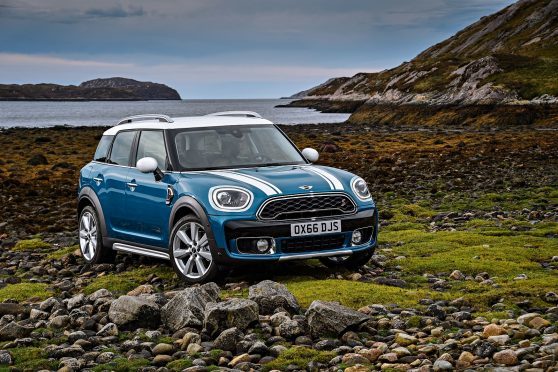The new Mini Countryman is available at launch with a choice of five new engines: two diesels and three petrol-powered variants, all of them featuring Mini’s TwinPower turbo technology.
Most will want one of the 2.0-litre diesels – there’s a 150bhp unit in the Cooper D or a 190bhp powerplant in the Cooper SD that puts out 295lb/ft of toque, providing a 0-62mph sprint of just 7.7 seconds.
The petrol line-up starts with the 136bhp 1.5-litre three-cylinder unit used in the Cooper Countryman. The alternative is the 192bhp 2.0-litre powerplant you’ll find in the pokey Cooper S, a variant able to complete the sprint to 62mph from rest in just 7.5 seconds.
Steptronic auto transmission with paddleshifters is optional across the range. Another option across the line-up is an improved version of Mini’s ALL4 all-wheel drive system. This set-up now reacts more quickly and precisely to changing situations.

The most interesting engine option though is the plug-in hybrid set-up used in the priciest variant, the Cooper S E ALL4 model. Here, the 1.5-litre 136bhp Cooper engine is mated with an 88bhp electric motor and the whole package is combined with Steptronic auto transmission and ALL4 4WD.
The problem with the original Countryman was that in size, it sat rather awkwardly between the compact Juke-shaped part of the compact crossover segment and the larger Qashqai-shaped family section of this class.
With this larger Mk2 model, the target market for this car can be much more clearly defined and high-ish pricing can be more easily justified.
It’s 20cm longer than before with 7.5cm of extra wheelbase length, enlarged dimensions that make it the largest Mini ever made.
You certainly feel that inside, where both driver and front passenger benefit from extended head and shoulder space.

The second row of seating now contains three fully-fledged seats, and the rear door openings have been enlarged, enabling easier entry and exit. In addition to overall interior width, leg space is now significantly more generous too, with an extra five centimetres of knee room over the previous model.
The rear seats can be shifted back and forth by up to 13cm, prioritising either passenger legroom or boot capacity depending on the situation. The folding rear backrest offers a 40:20:40 split and also provides a variable tilt angle so as to also offer either increased seating comfort or additional storage space for the bigger 450-litre boot at the rear.
Prices have risen significantly: it’s no longer possible to buy any sort of Countryman for well under £20,000. Still, given that this car is now large enough to compete in a larger section of the crossover market, you could argue that this is fully justified.
The asking figures start at around £22,500 for the least expensive Cooper model and rise to around £30,000 for the car in Cooper SD ALL4 guise.
Throughout the range, there’s the option of finding around £1,500 more for Steptronic automatic transmission.
The Cooper S E Countryman ALL4 plug-in hybrid model is priced from around £31,500.
Reflecting customer demand for high-end features, equipment levels on this Mk2 model have been increased. All variants get a navigation system, bluetooth, cruise control an emergency E-call set-up and active guard autonomous braking.
Naturally, being a Mini, there’s broad scope for personalisation, with extensive colour and trim options and advanced technology including a new 8.8-inch touchscreen display as part of the Mini Navigation System XL.
The luggage area can be accessed via an optional electric tailgate that can be opened with a wave of your foot beneath the bumper.
One unique option is the picnic bench – a flexible surface that folds out of the luggage compartment and provides seating for two people.
The Countryman has certainly cleaned up its act. The 2.0-litre diesel unit most will choose returns 64.2mpg on the combined cycle and 113g/km of C2in Cooper D guise – or 61.4mpg and 121g/km on Cooper SD form.
Petrol people get a 1.5-litre motor in the Cooper that returns 51.4mpg and 126g/km. Or a 2.0-litre unit in the Cooper S that manages 45.6mpg and 141g/km.
The efficiency headline with this Mk2 model range is the addition of Mini’s first plug-in hybrid engine. Here, fuel consumption and CO2emissions are very low, with 134.5mpg and 49g/km claimed respectively. Plus this model can travel up to 25 miles on electric power alone.
Via a wallbox, the 7.6kWh battery can be recharged in two and a quarter hours: use a regular household socket and it’ll take an hour longer.
As you drive, there’s an eDrive toggle switch that gives you three operating modes. In auto, the car will run on electric power alone at speeds of up to 50mph or in max at up to 78mph.

Finally, there’s a “save battery” option that allows you to “freeze” your all-electric charge capability so you can activate it later in your trip – say in urban driving you’ll reach at the end of a long motorway haul.
The Countryman is a Mini – but not as many will know it. But then if it was, this Countryman wouldn’t be able to continually keep existing Mini people loyal when they out-grew their city runabouts and shopping rockets.
Nor would 80% of its sales tempt in buyers new to the brand. Customers liking the vibrant SUV-inspired crossover concept, but wanting it with a little more tarmac sparkle.
This larger, more sophisticated second-generation Countryman model has achieved both these things, though arguably at the cost of British style and charisma.
Still, now cleaner under the bonnet and smarter inside and out, it’s as suited to the urban jungle as a Land Rover is to the Amazon, a car created for the times we live in.
